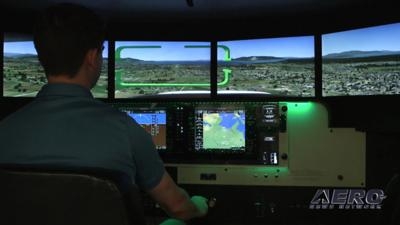Sat, Jun 30, 2018
Rule Goes Into Effect July 27
The FAA has published a rule in the Federal Register laying out new guidelines for the use of "aviation training devices" for flight training.

According to the published rule, use of these training devices has proven to be an effective, safe, and affordable means of obtaining pilot experience. This rulemaking also addresses changing technologies by accommodating the use of technically advanced airplanes as an alternative to the use of older complex single engine airplanes for the commercial pilot training and testing requirements.
Additionally, this rulemaking broadens the opportunities for military instructor pilots or pilot examiners to obtain civilian ratings based on military experience, expands opportunities for logging pilot time, and removes a burden from sport pilot instructors by permitting them to serve as safety pilots. Finally, this rulemaking includes changes to some of the provisions established in an August 2009 final rule.
These actions are necessary to bring the regulations in line with current needs and activities of the general aviation training community and pilots.
This final rule amends the regulations governing the use of aviation training devices (ATDs). As stated in the NPRM, the FAA approves ATDs for use in pilot certification training. Title 14 of the Code of Federal Regulations (14 CFR) part 60 governs the qualification of flight simulation training devices (FSTD), which include full flight simulators (FFSs) levels A through D and flight training devices (FTDs) levels 4 through 7.
Under the final rule, the FAA is:
- Adding a definition of ATD in § 61.1;
- removing the requirement for an instructor to be present when a pilot accomplishes his or her instrument recency in an FFS, FTD, or ATD; and
- amending the regulations to allow pilots to accomplish instrument recency experience in ATDs at the same interval allowed for FFSs and FTDs.
The rule becomes effective July 27, 2018. There are extensive details about the new rules provided at the FMI link below.
(Source: Federal Register. Image from file)
More News
He Attempted To Restart The Engine Three Times. On The Third Restart Attempt, He Noticed That Flames Were Coming Out From The Right Wing Near The Fuel Cap Analysis: The pilot repor>[...]
Make Sure You NEVER Miss A New Story From Aero-News Network Do you ever feel like you never see posts from a certain person or page on Facebook or Instagram? Here’s how you c>[...]
From 2009 (YouTube Edition): Leading Air Show Performers Give Their Best Advice for Newcomers On December 6th through December 9th, the Paris Las Vegas Hotel hosted over 1,500 air >[...]
Aero Linx: NASA ASRS ASRS captures confidential reports, analyzes the resulting aviation safety data, and disseminates vital information to the aviation community. The ASRS is an i>[...]
“For our inaugural Pylon Racing Seminar in Roswell, we were thrilled to certify 60 pilots across our six closed-course pylon race classes. Not only did this year’s PRS >[...]
 NTSB Final Report: Rutan Long-EZ
NTSB Final Report: Rutan Long-EZ ANN FAQ: Turn On Post Notifications
ANN FAQ: Turn On Post Notifications Classic Aero-TV: ICAS Perspectives - Advice for New Air Show Performers
Classic Aero-TV: ICAS Perspectives - Advice for New Air Show Performers ANN's Daily Aero-Linx (06.28.25)
ANN's Daily Aero-Linx (06.28.25) Aero-News: Quote of the Day (06.28.25)
Aero-News: Quote of the Day (06.28.25)



